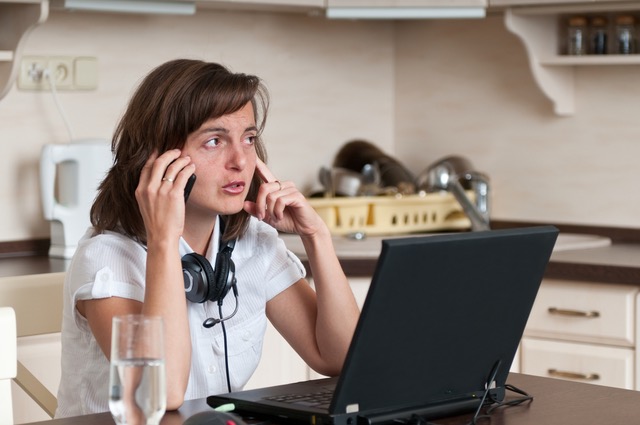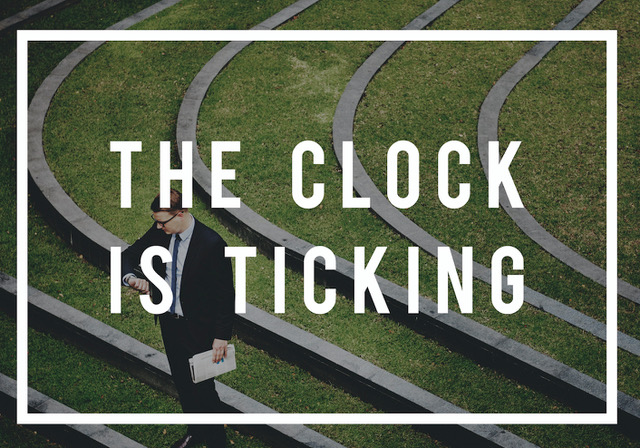Video Conferences Taking Mental Toll
Experts find video conferences are exhausting and emotionally draining
“A lot of people just don’t like a camera in their face and are tired of trying to look good.”
Old-fashioned telephone conference calling winning new fans
(Summary: This article is about the pros and cons of video conferencing vs. regular phone (audio) conference calling. If you are interested in obtaining a phone conference call service, you can click here for a fast conference call set-up.)
By now, you’ve heard these kinds of comments regarding the ubiquitous video conference calls:
“I can’t stand it anymore. Every time we have a video conference it’s a major production. I didn’t sign up to be in show business.”
“I don’t like the way I look and I can never get the lighting or angle right. I’m on a laptop and the camera is always up my nose.”
“The worst part of these video conferences is that I have to look and act interested in topics I have nothing to do with. I could turn off the camera, but then everyone thinks I left.”
“Not only are these video calls intrusive, but they give me a headache. I just want to close my eyes and zone out.”
Frustrations continue to mount as video conferencing becomes a staple of business life. Catapulted by the pandemic, millions of people are turning to their teenage sons and daughters for advice on how to present themselves in the best light — and yes, lighting is a big deal!
Meantime, millions more are yearning for simpler times when just picking up the phone and conferencing with associates, clients and colleagues seemed so easy and comfortable.
Here is a review of the latest scientific findings on why and how old-fashioned and basic phone conferencing is winning over new converts who aren’t interested in fixing their hair or making sure they have the right makeup.
New Peer Reviewed Study Shows How Video Conferencing Causes Angst
Stanford Professor Jeremy Bailenson, examined the psychological effects of spending hours per day on video conferencing platforms. He is a communication professor and founding director of the Stanford Virtual Human Interaction Lab (VHIL).
In the first peer-reviewed article, published in the journal Technology, Mind and Behavior on Feb. 23, 2021, Bailenson discusses video conferencing, looking at the specific reasons why being on video conference can cause mental fatigue and strain. Here is a summary and synopsis of the findings:
1) Exposure is “intense” and “unnatural.”
The reports says, “Both the amount of eye contact we engage in on video chats, as well as the size of faces on screens is unnatural.
“In a normal meeting, people will variously be looking at the speaker, taking notes or looking elsewhere. But on video calls, everyone is looking at everyone, all the time. A listener is treated nonverbally like a speaker, so even if you don’t speak once in a meeting, you are still looking at faces staring at you. The amount of eye contact is dramatically increased.
“Social anxiety of public speaking is one of the biggest phobias that exists in our population,” Bailenson said. “When you’re standing up there and everybody’s staring at you, that’s a stressful experience.”

Another source of stress is that, depending on your monitor size and whether you’re using an external monitor, faces on videoconferencing calls can appear too large for comfort.
“In general, for most setups, if it’s a one-on-one conversation when you’re with coworkers or even strangers on video, you’re seeing their face at a size which simulates a personal space that you normally experience when you’re with somebody intimately,” Bailenson said.
When someone’s face is that close to ours in real life, our brains interpret it as an intense situation that is either going to lead to mating or to conflict. “What’s happening, in effect, is you’re in this hyper-aroused state,” Bailenson said.
Solution: Until the platforms change their interface, Bailenson recommends taking Zoom out of the full-screen option and reducing the size of the Zoom window relative to the monitor to minimize face size, and to use an external keyboard to allow an increase in the personal space bubble between oneself and the grid.
2) It’s like constantly looking into a mirror — it’s stressful.
Quoting the report, “Most video platforms show a square of what you look like on camera during a chat. But that’s unnatural, Bailenson said. “In the real world, if somebody was following you around with a mirror constantly – so that while you were talking to people, making decisions, giving feedback, getting feedback – you were seeing yourself in a mirror, that would just be crazy. No one would ever consider that,” he added.
Bailenson cited studies showing that when you see a reflection of yourself, you are more critical of yourself. Many of us are now seeing ourselves on video chats for many hours every day. “It’s taxing on us. It’s stressful. And there’s lots of research showing that there are negative emotional consequences to seeing yourself in a mirror.”
3) Video conferencing makes you feel confined and stuck in one position.
The report emphasizes that typical phone conference calls enables “humans to walk around and move.” However, when you’re on a video call, you need to stay in one place and “movement is limited in ways that are not natural.” Research is indicating that when people are moving, they are better able to think and express themselves.
That’s one of the attributes of phone conference calling. Because no one can see you, you can sit, stand, walk, lay down, or do anything you need to do to make yourself comfortable. As long as you can talk, the rest doesn’t matter and no one will be making any judgements.
4) It’s harder to send and receive non-verbal gestures.
Bailenson emphasizes that in regular day to day interactions, it is natural to pick up body language — nonverbal communication — that each of us interpret subconsciously. But in a video conference, those cues area much more difficult to send and receive. Everyone is having a harder time understanding exactly what people are thinking and expressing since they are only seeing one part of a body.
As an example, he said, “Gestures could also mean different things in a video meeting context. A sidelong glance to someone during an in-person meeting means something very different than a person on a video chat grid looking off-screen to their child who just walked into their home office.”
He advocates that during long video sessions, participants should give themselves breaks and switch to audio only. He says, “This is not simply you turning off your camera to take a break from having to be nonverbally active, but also turning your body away from the screen.”
While Bailenson offers several ideas to mitigate the fatiguing and stressful effects of video conferencing, some may believe they are not preferable. For example, he recommends an interface where users would not be able to see themselves. However, a good number of people may want to know how their image is being presented to others throughout the conference.
A Goldmine for Makeup Companies!
Not only does effect the mental and emotional state of participants, but there are other effects as well — namely, the rush for makeup! Especially for men!
For good or bad, video conferencing is forcing men to become more self-conscious of their appearance. In a nutshell, they don’t like how they look. Video conferencing is causing them to see themselves in ways they never noticed before. That’s why, in the past year, it has been reported that Google searches for “men’s makeup” jumped nearly 80%, along with other searches including covering redness, hiding pimples and hiding under-eye bags. You can read more about this phenomenon here.
The Solution: A Phone Conference!
Yes, the old-fashioned phone conference call seems to be seeing a comeback, rescuing millions of video conference ex-pats who have been caught and consumed by the video tsunami. Here is a list of the top reasons why phone conference calling is seeing a come back. In other words, have prepared a list of the Top 10 Reasons Why Phone Conferencing is Coming Back. Here they are:
1) You don’t have to log-in to anything, online or on the phone.
2) You don’t have to fix any settings on your phone or computer, nor do you have to download programs or apps.
3) You don’t have to worry or think about what you look like or how you are dressed.
4) You don’t have to worry or think about your physical setting, your background or your lighting.
5) You’re free to do other things, even walk around, during a phone conference call.
6) You don’t have to worry or think about distractions or intrusions from family members or associates.
7) You can phone conference from anywhere you can carry a cell phone.
8) You don’t have to get a new set of passcodes every time you want to have a conference. You can re-use your phone passcodes anytime, until you want to change them.
9) You can tell your associates and friends, “I can hear you. I don’t have to see you too.”
When Verbal Communication is Enough
While video conferencing is skyrocketing in use and popularity, there are a few cracks beginning to show in the armor. Whether the novelty has worn off, or people are just becoming tired of “being on” for hours, video conferencing is starting to take a toll. Outside of a video conference about yoga or meditation, verbal communication seems to be enough for most people.
If you are looking to get off the video conferencing merry-go-round and settling into more of a traditional and relaxing way to community and collaborate, check out all the advantages of our phone conference service here. You can have your first phone conference in minutes.

 Looking to set up a 7-person conference call right now? You can get your conference call-in number and passcodes immediately by going to our
Looking to set up a 7-person conference call right now? You can get your conference call-in number and passcodes immediately by going to our  Do you have a 6-person conference call coming up quick? No problem. You can get your conference call-in number and passcodes in the next 2 minutes by going to our
Do you have a 6-person conference call coming up quick? No problem. You can get your conference call-in number and passcodes in the next 2 minutes by going to our  Need a phone conference call for 4 people? You can set one up in the next 2 minutes by going to our
Need a phone conference call for 4 people? You can set one up in the next 2 minutes by going to our  If you are looking to have a 5-person conference call, you can get your call-in number and passcodes immediately by taking advantage of our
If you are looking to have a 5-person conference call, you can get your call-in number and passcodes immediately by taking advantage of our 



